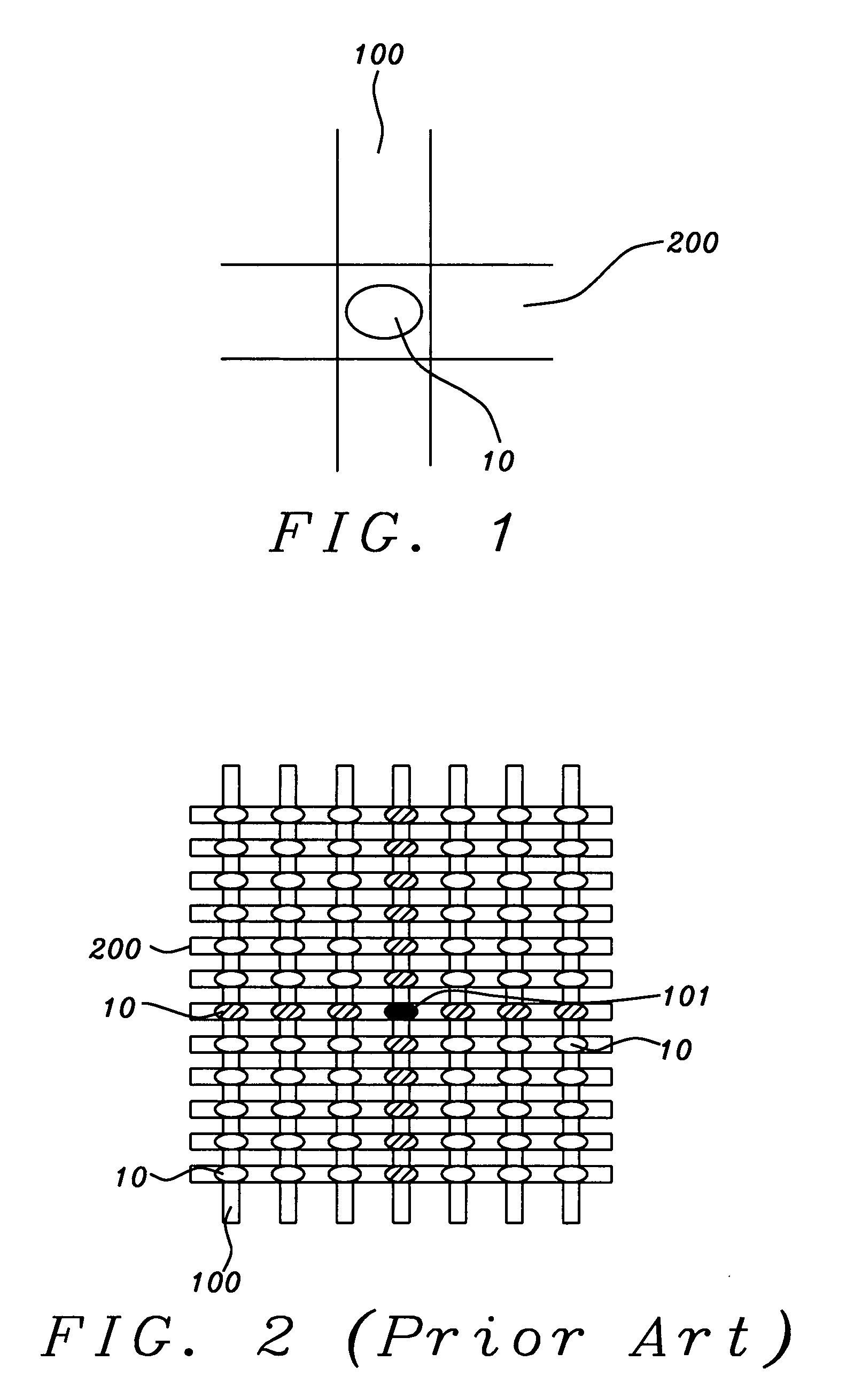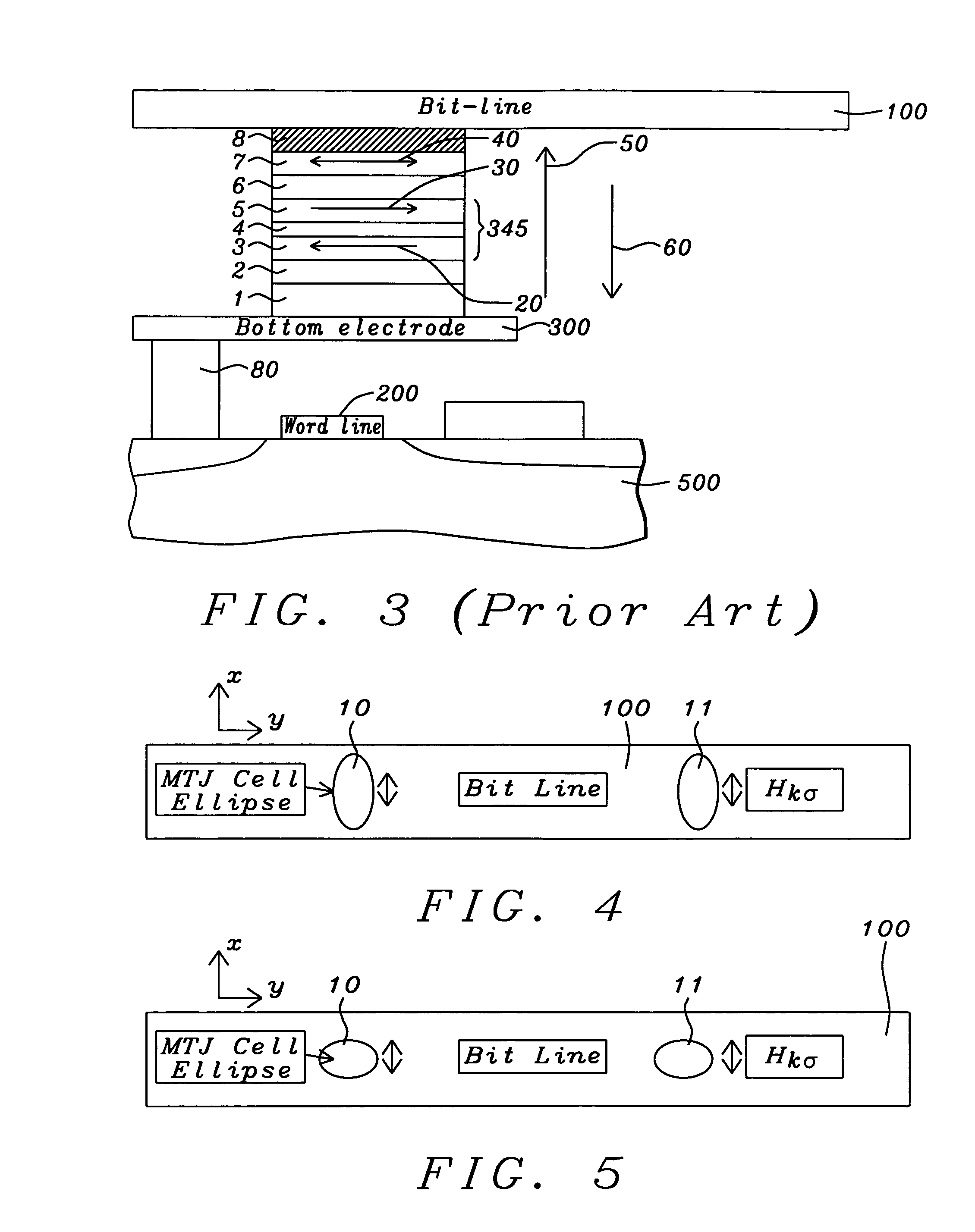MRAM with means of controlling magnetic anisotropy
a magnetic anisotropy and magnetic field technology, applied in the direction of digital storage, instruments, semiconductor devices, etc., can solve the problems of unwanted cell switching, insufficient to achieve the required switching, and still be accidentally programmed, so as to reduce the effect of thermal agitation
- Summary
- Abstract
- Description
- Claims
- Application Information
AI Technical Summary
Benefits of technology
Problems solved by technology
Method used
Image
Examples
Embodiment Construction
[0037]The preferred embodiment of the present invention is an MRAM cell of the spin-transfer variety, having a CPP-MTJ configuration and including a free layer whose switching field, Hs is a result of a magnetic anisotropy produced by a combination of shape anisotropy and stress-induced magnetostriction. The pinned layer can be a single layer of ferromagnetic material or a synthetic (SyAP) antiferromagnetic layer. As noted above, during operation of the cell, the passage of a current perpendicularly through the free layer produces a torque induced switching of the free layer magnetization due to the interaction of the spins of the conduction electrons with the magnetic moment of the free layer. The torque must be sufficient to switch the magnetization direction, against the countering effect of the switching field. Once the switch is complete, the same switching field provides sufficient magnetic energy to the magnetic moment configuration to stabilize the magnetization against ther...
PUM
 Login to View More
Login to View More Abstract
Description
Claims
Application Information
 Login to View More
Login to View More - R&D
- Intellectual Property
- Life Sciences
- Materials
- Tech Scout
- Unparalleled Data Quality
- Higher Quality Content
- 60% Fewer Hallucinations
Browse by: Latest US Patents, China's latest patents, Technical Efficacy Thesaurus, Application Domain, Technology Topic, Popular Technical Reports.
© 2025 PatSnap. All rights reserved.Legal|Privacy policy|Modern Slavery Act Transparency Statement|Sitemap|About US| Contact US: help@patsnap.com



